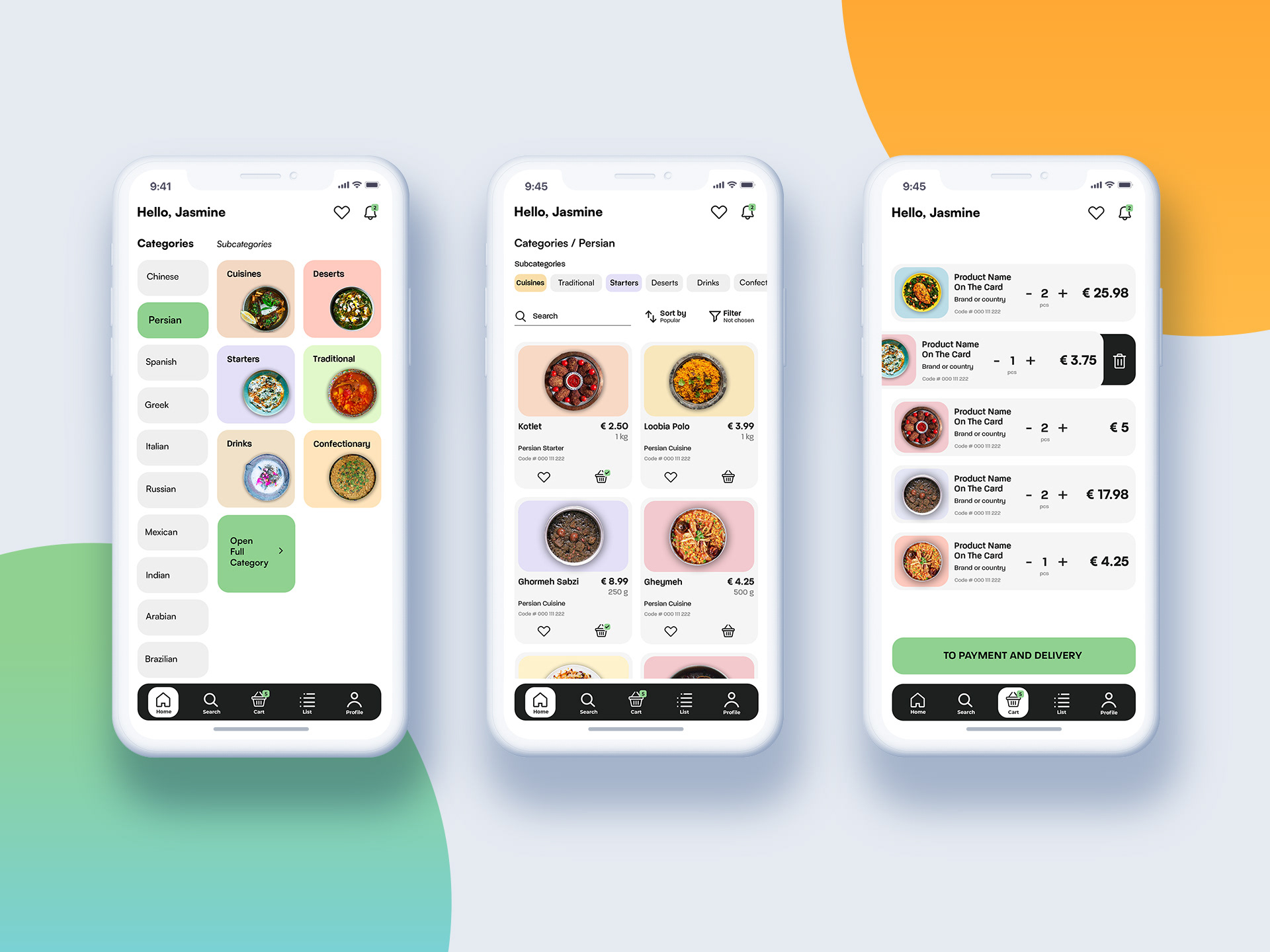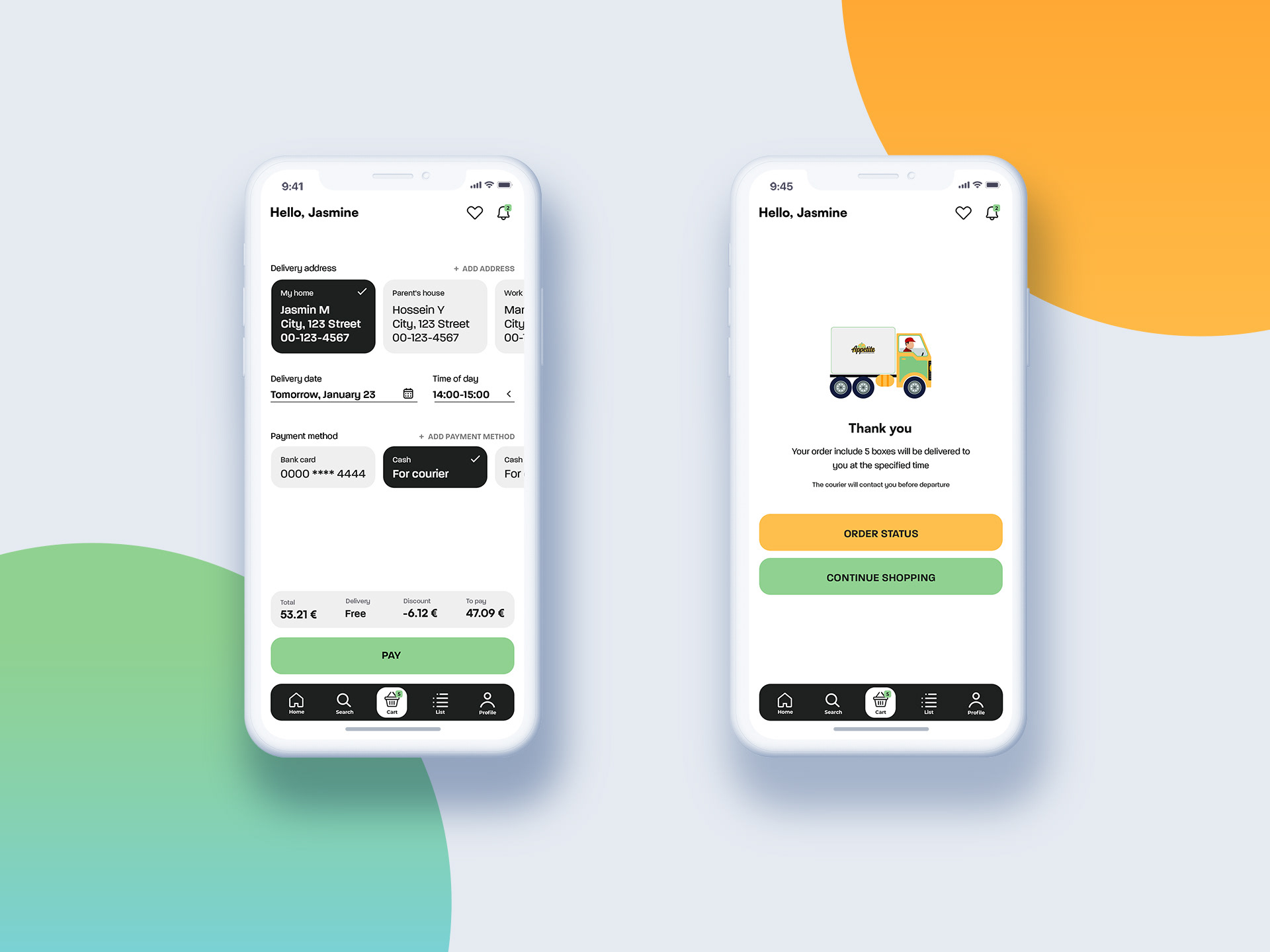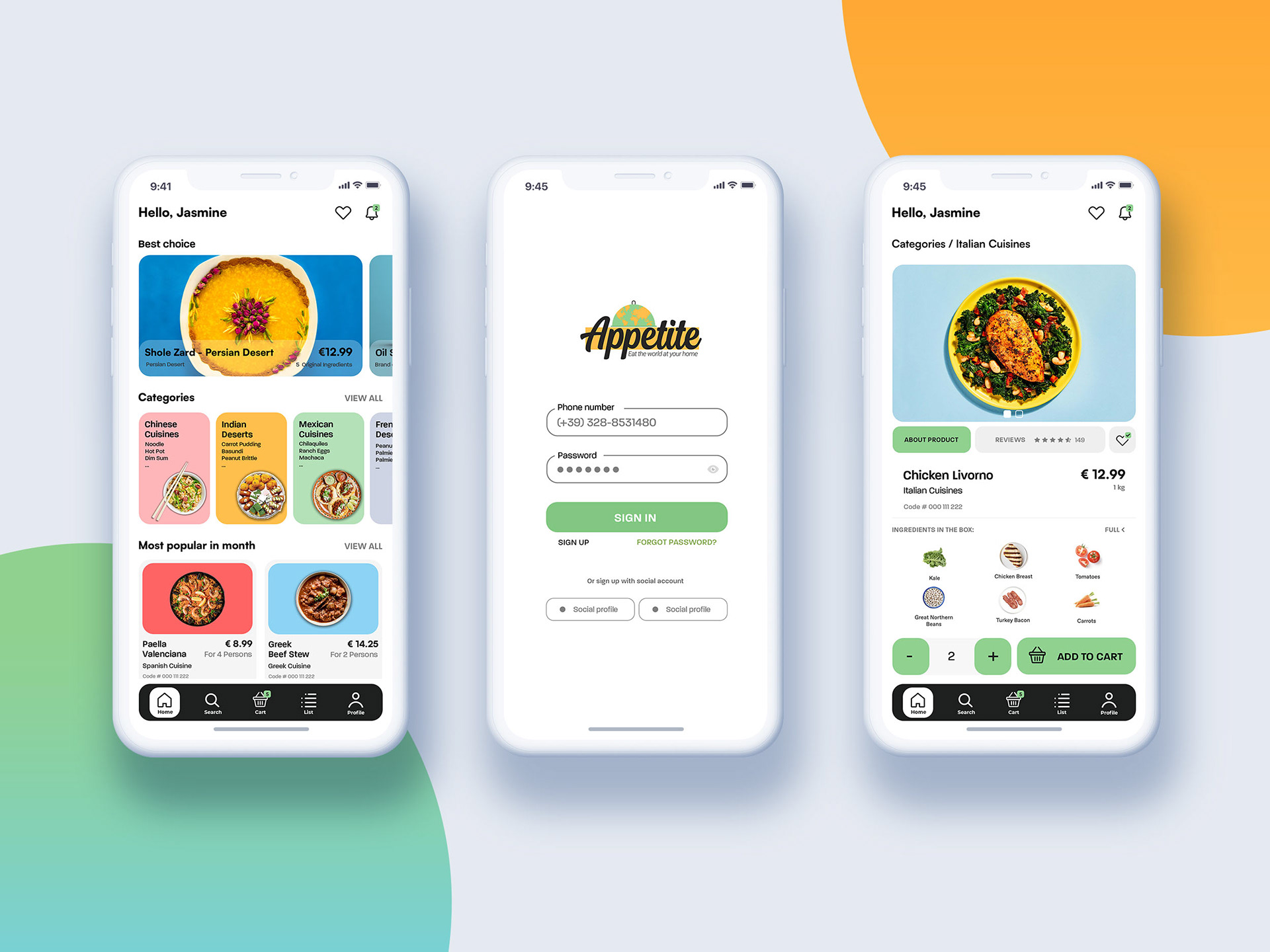
STUDIO NO 1 :
Via Edoardo Bassini 38, Milano, IT
STUDIO NO 2 :
Via Croce Rosa 3, Genoa, IT
Phone : +39 328 853 1480
Email : hello@yavarinia.com

Meal-kit delivery startup for international people who live far from their homes.
A complete startup project with all business models, branding, and UX/UI design
Appetite is specializing in the delivery of ingredients for preparing an international meal. Moreover, we provide our customers with recipes to cook it. With consumers thinking twice about grocery shopping because of public health risks amid COVID-19, the meal kit industry also saw an increase in demand. With stay-at-home orders in place, home cooking became a necessary trend, including prepared food choices for families big and small. Even though there are some prominent meal kit delivery companies, we encountered a gap in this market for people who want to cook their own country dishes while they are living in a city as a foreigner or non-natives person. For example, in a city like Milan which has an international environment with a lot of foreigners that are almost 20% of Milan’s population, it is a real challenge to find national cuisines ingredients for non-Italian residents, So the main category of our customers are foreigners in Milan. Also, another potential customer category could be Italian who come from other cities in Italy to Milan. In Italy, each city has specific cuisines and their people want to cook them with original material. The third category of our customers would be people who would like to cook and test international cuisines, they exist as they are holding exhibitions and workshops every month all around the world because experiencing a different culture and different tastes are always interesting for people.
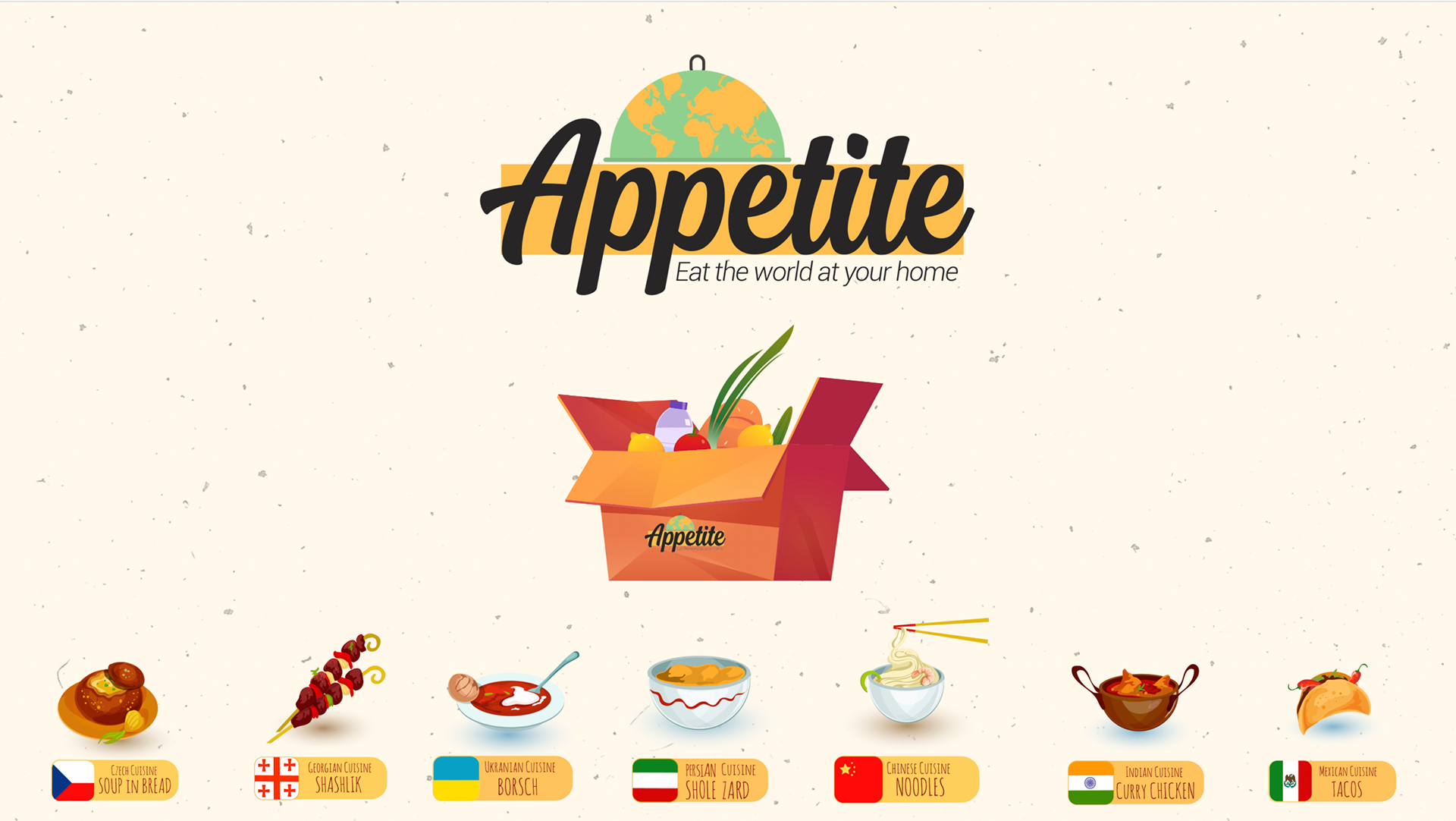
Once we came up with an idea and identified market needs, we had to position ourselves in the market and then analyze the market carefully to calculate risks and opportunities. In order to identify our potential buyers, we conducted a survey. In it, we asked about the age of the respondent, as well as about his field of activity and interest in our project. In total, 31 people took part in the survey. According to the results of the survey, it turned out that the majority of respondents are in the age range from 18 to 25 years (16 people), and in second place is the age range from 26 to 30 years (14 people). Respondents from 14 countries were involved in this survey, including Russia, Iran, India, Italy, China, Germany, etc. When we asked about their interest in our project, 18 people replied that they would use our service, 8 people doubted it and only 5 people answered negatively. Having the result, we created models that include SWOT, Porter’s Five Forces, a positioning map, and financial analysis. It showed us which area of the market we should focus on and how much investment we need.
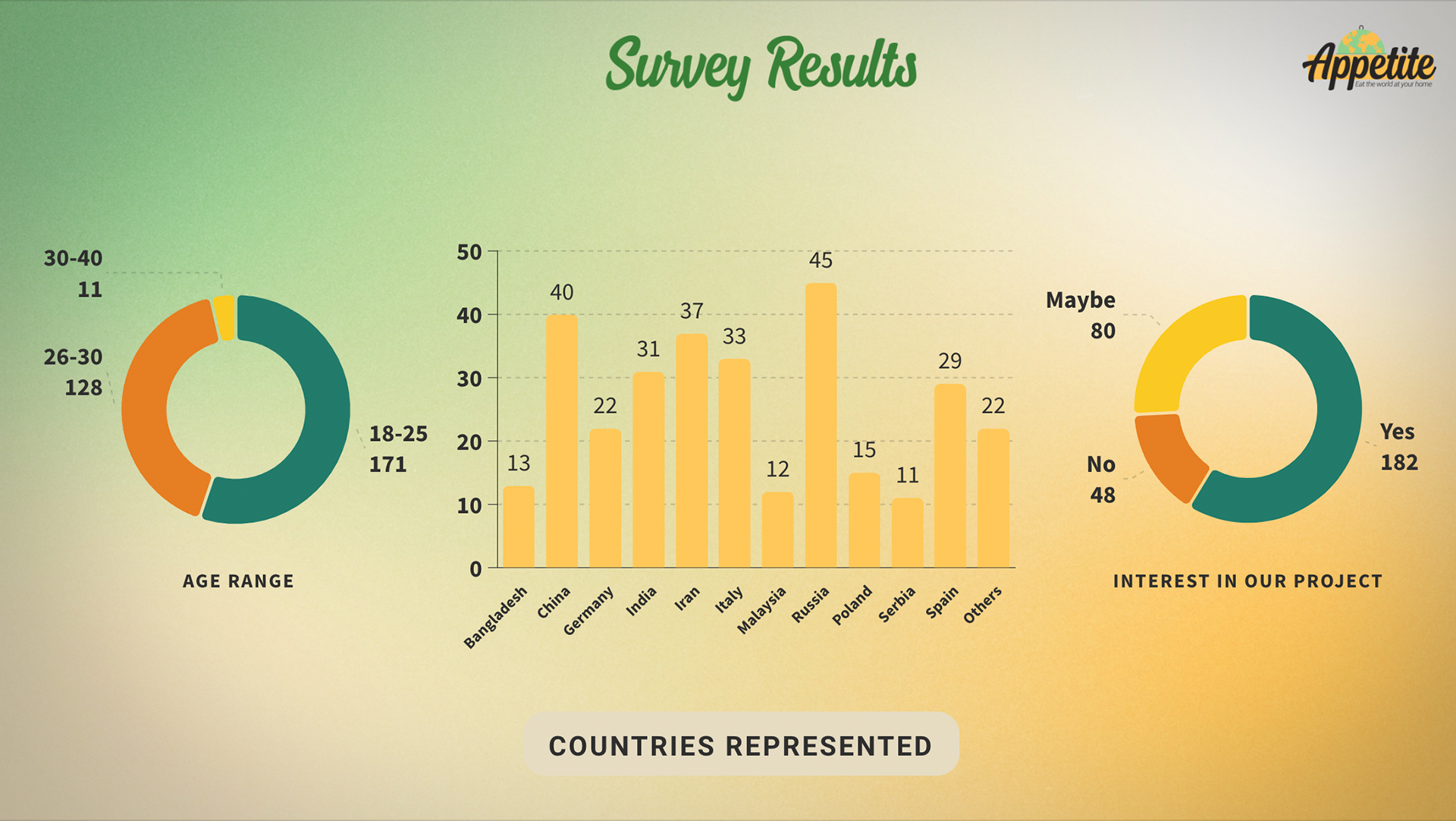
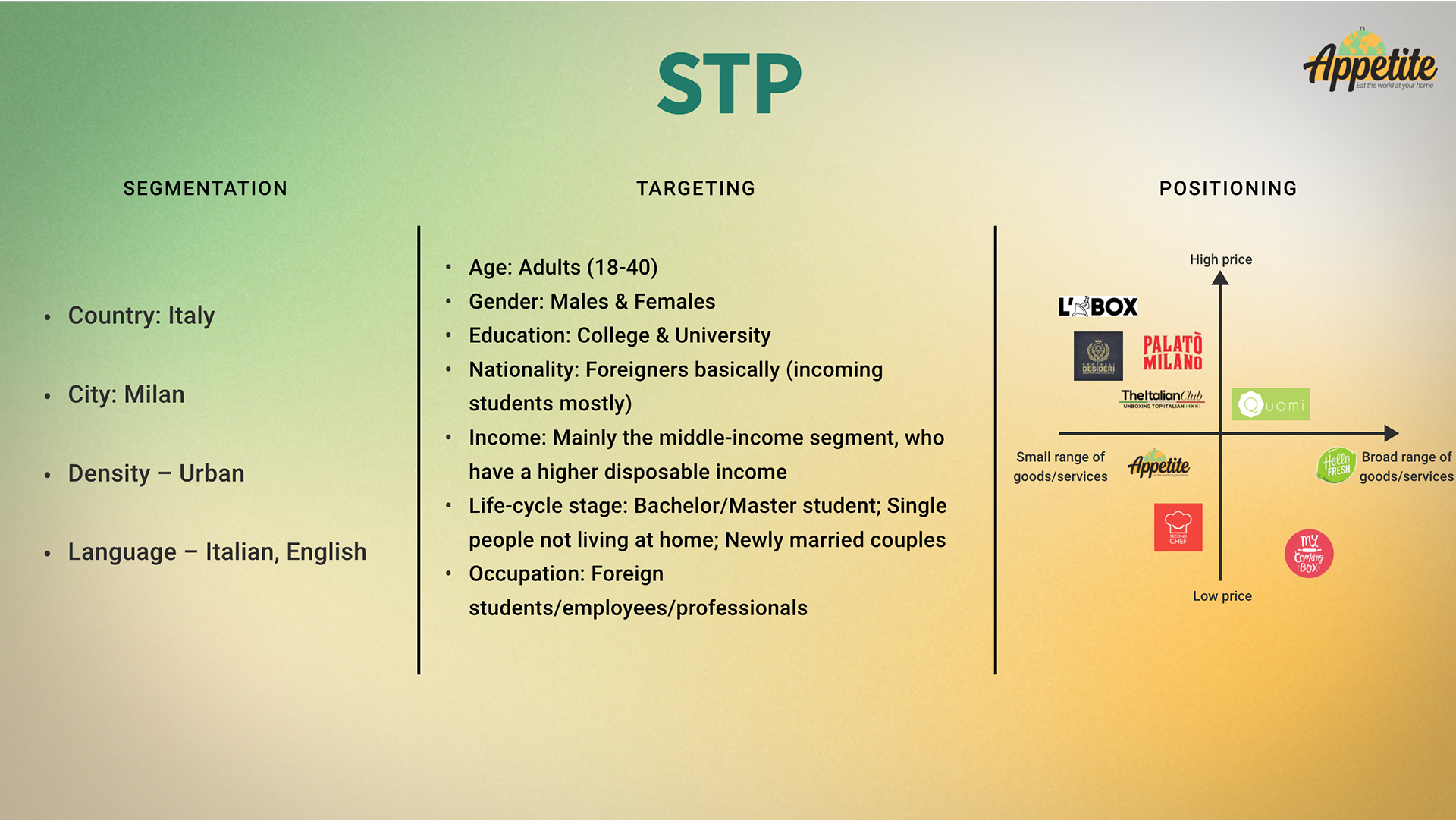
The two things that all world-class brands have in common are worldwide recognition and a clear commitment to their customers. It’s not a coincidence. It’s due to a shared commitment to delivering on the brand promise, as well as meticulous attention to the brand’s consistent presentation across all touchpoints. People form relationships with brands instead of companies. As a result, it’s critical that everyone involved with the Appetite brand is aware of our design philosophy and the brand promise that underlies it. Because at Appetite, we’re committed to developing our brand to a world-class level.
to help us achieve this recognition and build our firm’s global reputation our brand must:
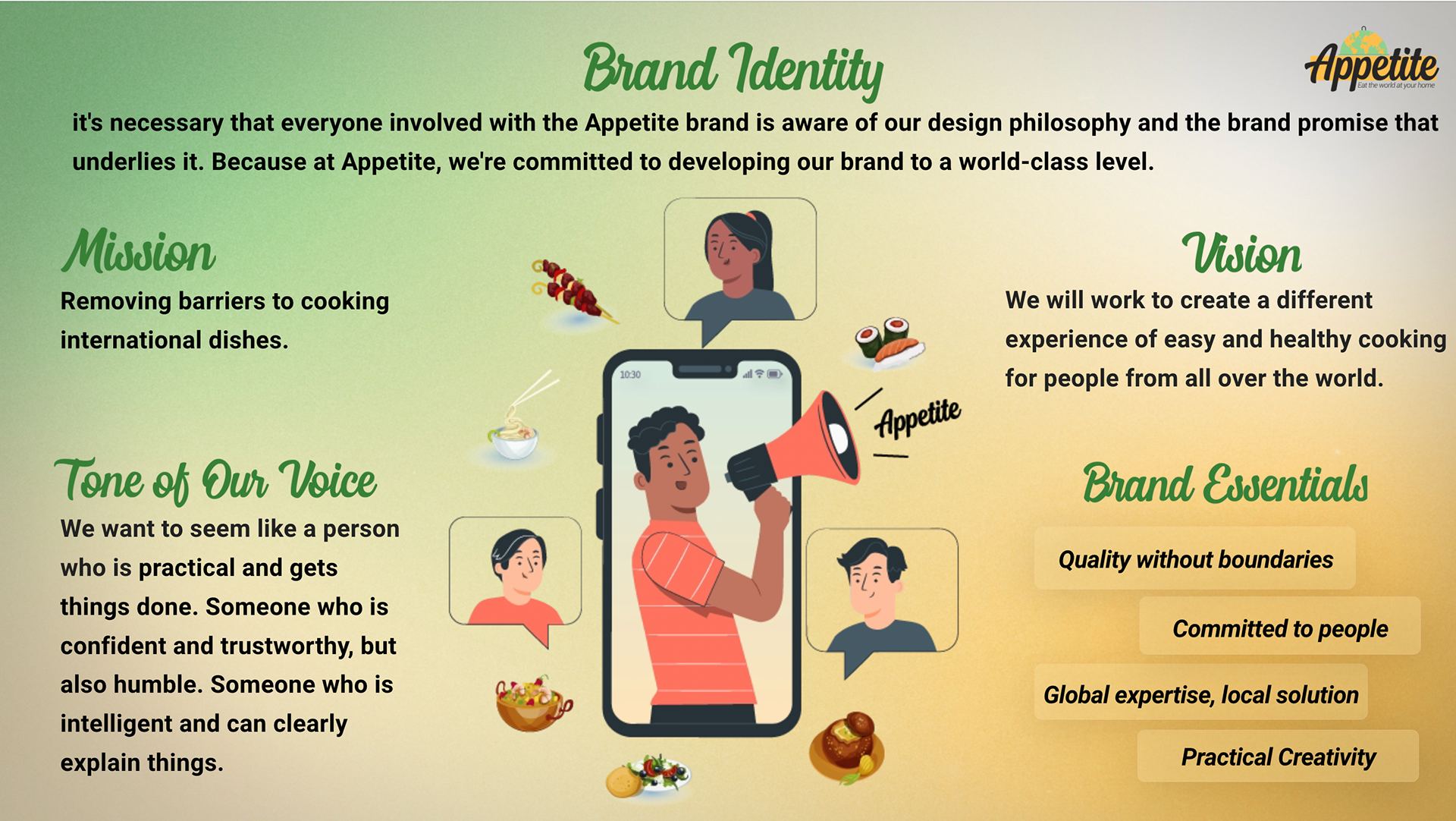
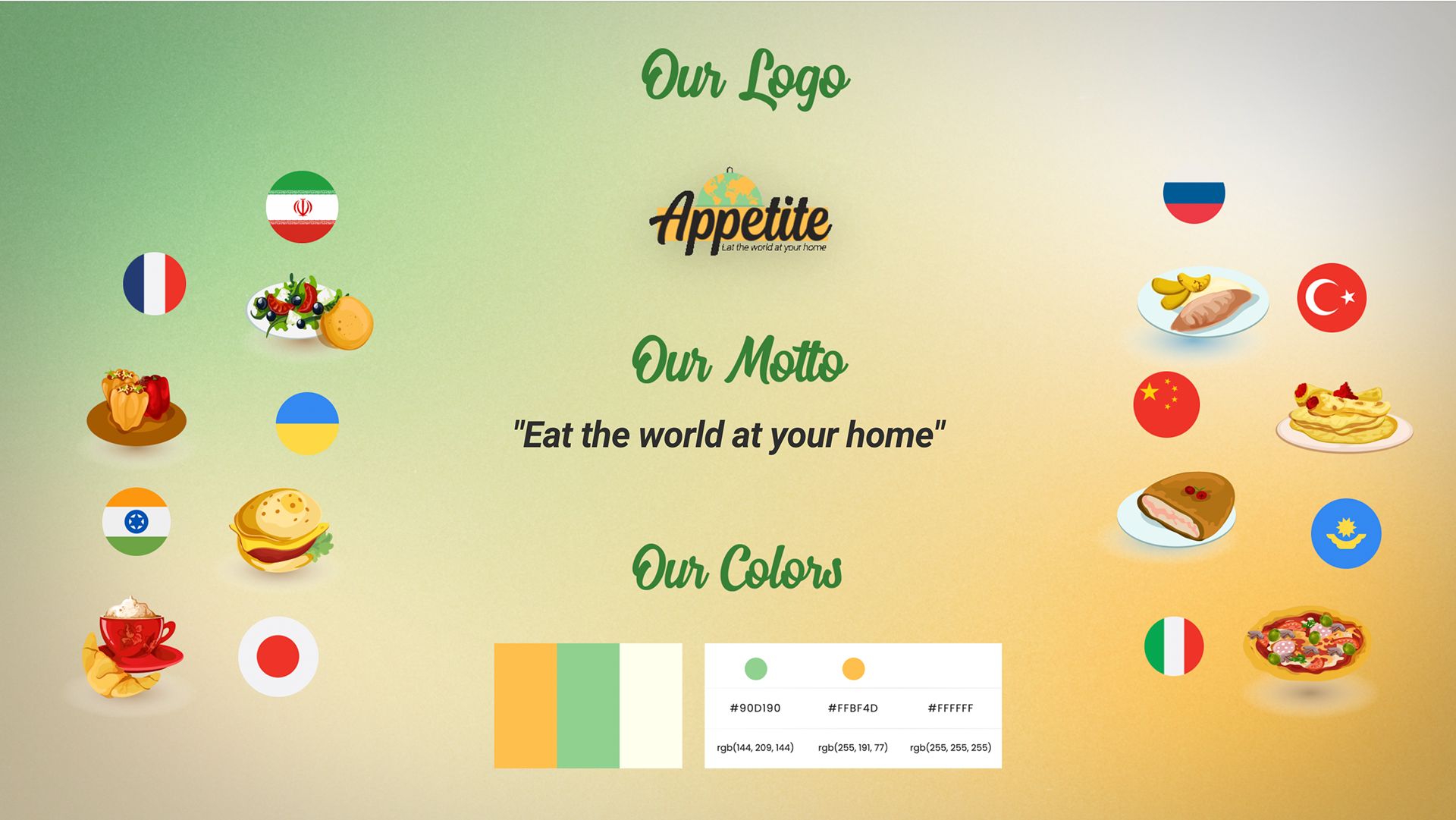
After finishing business and market analysis we decide to design an initial version of our application. Based on our research in previous phases we did not have a huge problem identifying the main goals and our persona. We needed a user-friendly application with categories based on nationalities and different cultures, but it was also important to know what kind of users will come to our application and what is his/her profile.
My Role: I collaborated with other 6 people in the research phase same as we did in the business analysis, and after that, I made a prototype and after that, I designed the user interface.
Tools: Figma, Photoshop, Maze, Illustrator
Persona: In the entire of our research we bolded just our first category of our potential customers, accordingly in this step we also will focus on one main persona but we also consider other types in the process of design.
1- Jasmine – female, 23 years old, an international student at the University of Milan
Goals:
– Gaining a unique experience of cultural exchange in Italy
– Expand knowledge in the field of politics and international relations
– Improving language skills
Problems:
– Doesn’t want to spend a lot of time grocery shopping
– She is tired of eating Italian food and she needs to eat her national food like the ones her mom used to cook for her.
– She is not completely perfect at cooking and needs instruction.
– Want to buy ingredients only for a specific dish in order to avoid food spoilage.
2- Chu Hua- female. 28 years old, a Chinese woman working in a pharmacy in Milan.
3- Carlo- male, 29 years old, from Sardegna in Italy and he moved to Milan to work for a marketing company.
4- Giulia, female, 50 years old, a native resident in Milan and retired, love to cook new recipes.
Brainstorming: In the ideate phase we all had some sessions to reach a unified structure of our design. What categories and features could be in our application and also the website, (we were simultaneously working on the website but it just was am initial version).
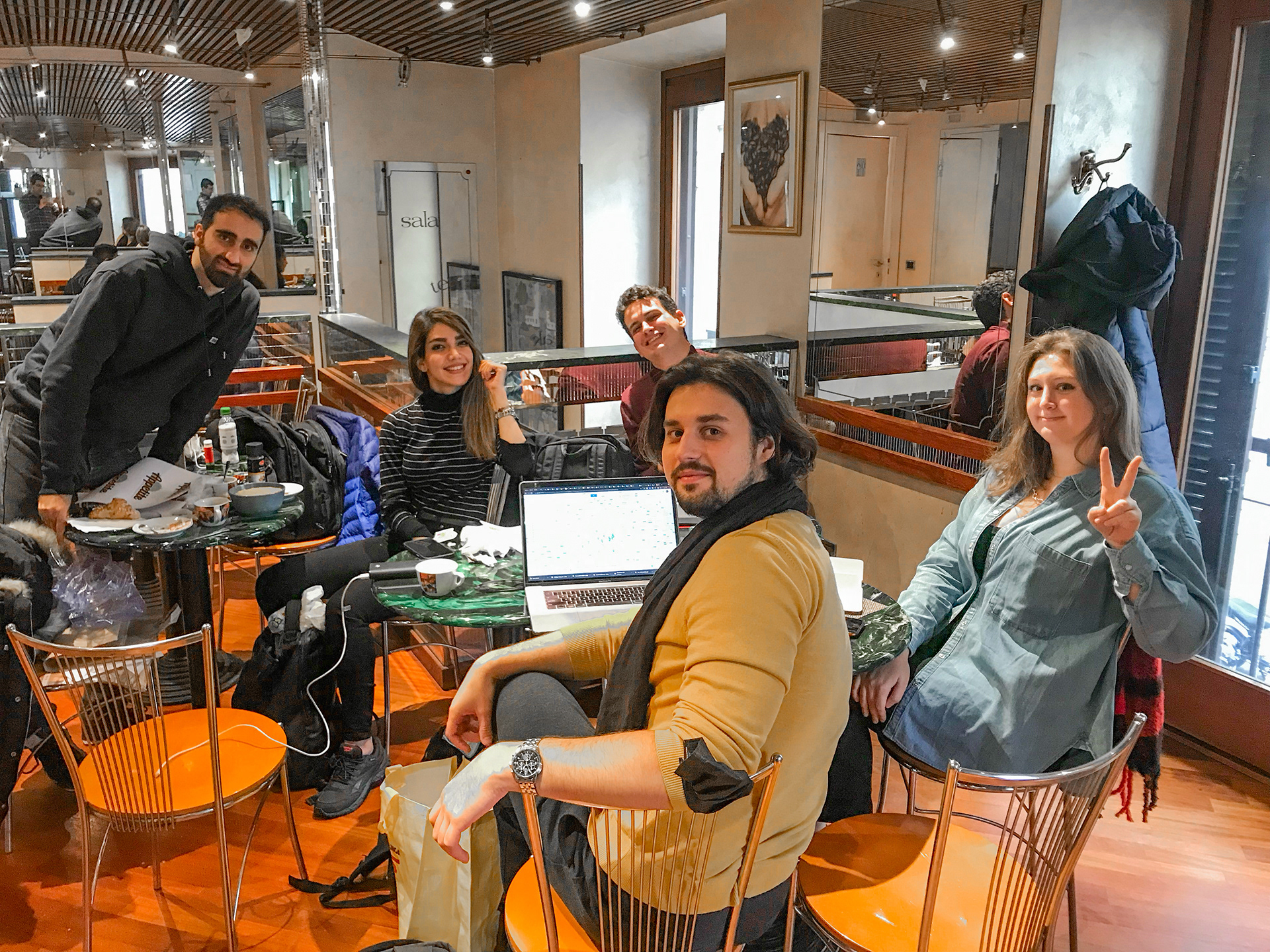
Wireframe: Sketching by hand helps me quickly experiment on different design approaches to come up with the concept. This allows me to visually design how the app can provide the absolute best user experience.
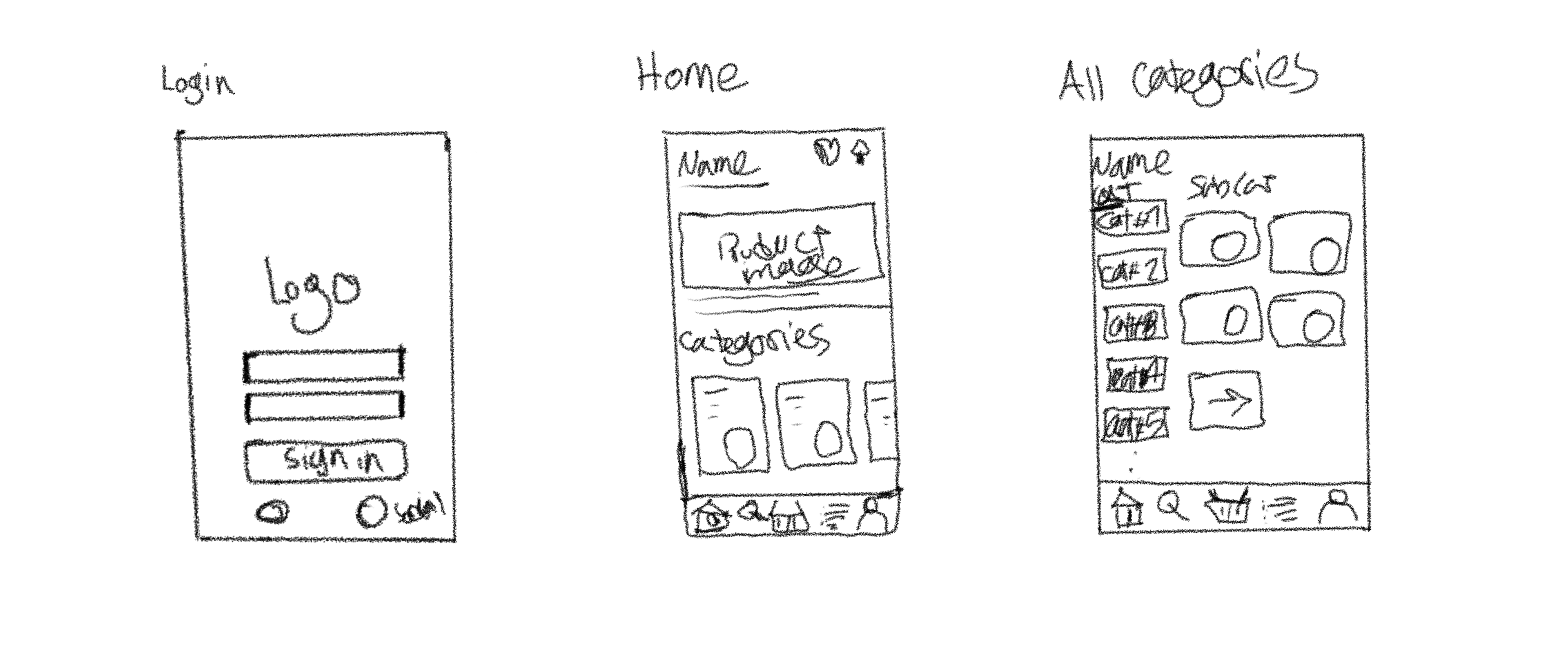
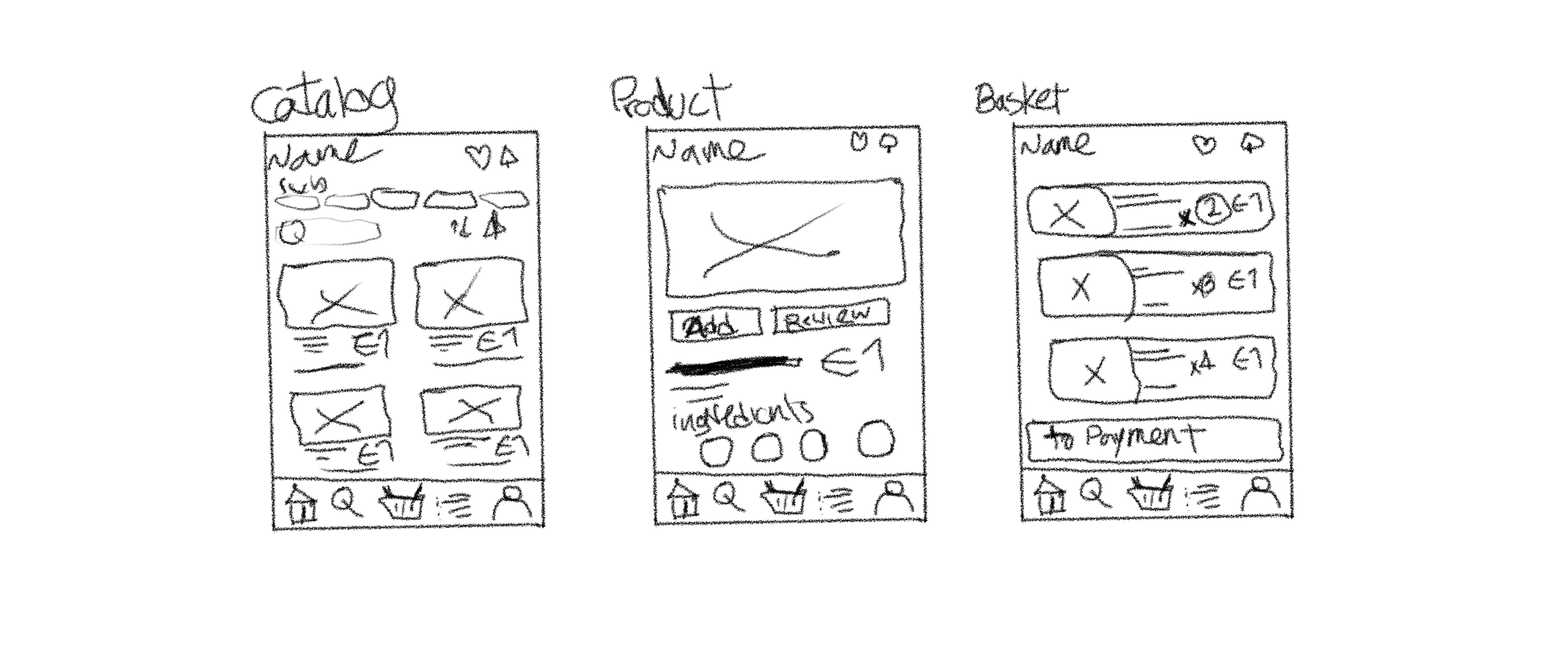
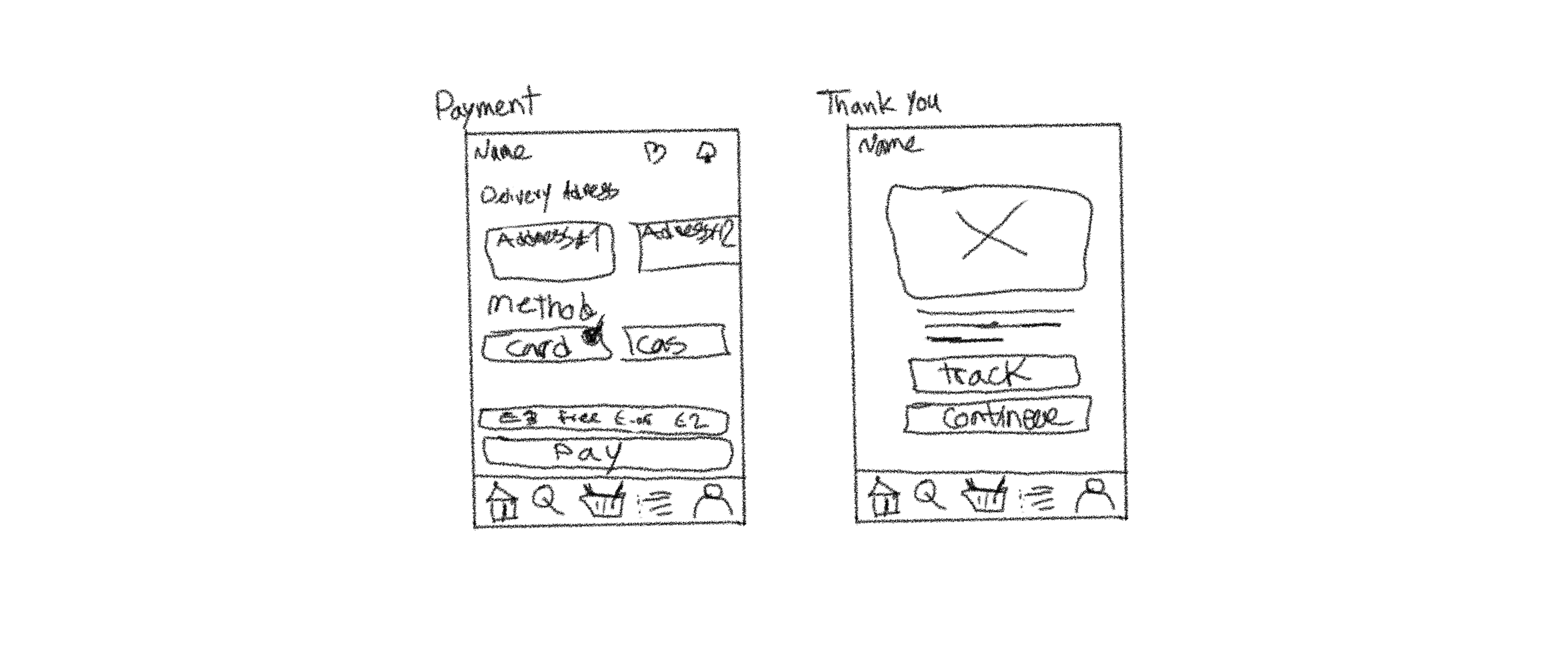
Design: Once all the prototypes were reviewed, tested, and refined, I started shaping out the visual part as the final outcome of this project. I was tasked with creating a design for mobile following existing brand guidelines and design systems that helped accelerate the visual process.

